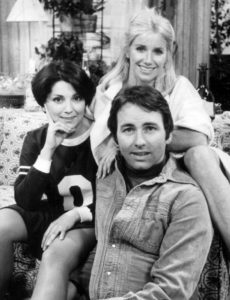
The Meaning Behind the ‘WC’ Sign: A Journey Through Bathroom Terminology
Have you ever noticed the letters WC outside a public restroom and wondered what they stand for? You’re not alone—people across the globe often puzzle over this cryptic abbreviation.
The Mystery of WC
Simply put, WC stands for water closet, a term historically used to describe a small room containing a toilet and sometimes a sink. While this might clarify the letters, it doesn’t exactly make the term feel more logical—similar to how “restroom,” “bathroom,” or “loo” can seem perplexing in their own right.
In 2020, a TikTok video featuring a couple named Shelby and Dylan hilariously highlighted the differences in bathroom terminology between Americans and Canadians. Walking past a sign reading washroom, Dylan quipped:
“What in the world is a washroom? And what are they washing in there? Oh, it’s a restroom. The only thing I wash in there is my hands.”
Shelby, off-camera, cheekily countered, “Do you rest in a restroom?”—to which Dylan admitted: “Good point. They both don’t make much sense.”
The video sparked a lively online debate about what to call the sacred space. Some commenters preferred “bathroom,” while others leaned toward “toilet,” “washroom,” or “restroom.”
One person humorously recounted a Disneyland visit where asking for the washroom led them to the laundromat. Another chimed in with, “Wait until he finds out about water closets.”
What Is a Water Closet?
According to Merriam-Webster, a water closet refers to “a compartment or room with a toilet” or “a toilet bowl and its accessories.”
Historically, the term reflects a time when specific rooms served distinct purposes. Bathrooms were for bathing, restrooms for resting or grooming, and the water closet for, well, using the toilet. As indoor plumbing became more common in the late 19th century, these spaces gradually merged into the modern bathroom we know today.
The water closet, however, often remained a separate, enclosed room in some homes and public spaces, particularly in Europe and international facilities. You’ll frequently spot the abbreviation WC in airports, hotels, or restaurants, catering to a globally diverse audience.
WC Across Cultures
Online forums like Reddit often dive into the quirks of global bathroom terminology. One post posed the question, Why is a public WC called a bathroom if there’s no bath?
A user responded:
“Americans might ask, ‘Why is it called a WC if it isn’t even a closet?’”
Others shared cultural takes:
- In Russian, it’s referred to as a room without windows, even if there’s a window.
- In Esperanto, it’s necesejo, meaning “necessary place.”
- Canadians frequently use washroom, which is also popular in parts of the U.S. Midwest.
Restroom vs. Bathroom vs. Washroom
The terminology debate continues, with many feeling washroom is the most logical since washing happens there. Meanwhile, terms like restroom or bathroom remain euphemisms.
One Redditor summed it up best:
“Best one, I think. You should be washing in there—not resting.”
What Do You Call It?
Whether you say WC, restroom, bathroom, toilet, or washroom, everyone has a favorite term. What’s yours? Share your thoughts, and don’t forget to spread this story to find out what others think!
Joyce DeWitt’s Candid Confession Confirms What We All Suspected

Decades may have passed since Three’s Company graced our screens, but its laughter still echoes in our hearts.
With unforgettable characters and side-splitting misunderstandings, this classic sitcom revolutionized the genre. Now, Joyce DeWitt reveals what really made the show a timeless treasure…

Public Domain
From the hilarious antics of three single roommates to the unforgettable performances of John Ritter and Suzanne Somers, Three’s Company remains a beloved staple of American television. It’s hard to believe it’s been 40 years since the series finale aired on ABC, yet its charm and humor still resonate today.
To illustrate how long ago Three’s Company became a hit, I just watched the intro. Seeing the shots from Santa Monica Pier during the show’s prime reminds me of how much has changed since they filmed there.
Sadly, neither John Ritter nor Suzanne Somers are with us anymore; both were taken from us far too soon. But keeping the spirit of Three’s Company alive is Joyce DeWitt, 75, who shares her vibrant stories and cherished memories from the beloved show.
”The most dear, precious, tender – and utterly unexpected – experiences that have come from working in ‘Three’s Company’ are the many, many adults who have told me that ‘Three’s Company’ was a safe haven they could count on during their teen years – for some, the only safe haven,” Joyce DeWitt told US Weekly.

Joyce DeWitt circa 1978. (Photo by Images Press/IMAGES/Getty Images)
Starring as Janet Wood alongside John Ritter and Suzanne Somers, DeWitt became a television icon and she was such a day brightener for millions.
She appeared in 171 episodes of the show between 1976 and 1984.
“It was such a gift. I mean, it was iconic. But who would have thought it?” Joyce DeWitt told The Spec. “All we were trying to do was make people laugh. When I think about it, the show was really an attempt to do a contemporary version of a 16th-century farce. It was about silliness running wild. I mean, we were talking about serious issues at times, but that was always somewhere underneath.”
“John Ritter used to say, ‘We don’t want people to just laugh but to fall over their couch laughing,’” she added. “The real issue was always the depth of friendship and the love those characters had for each other. That’s what drew people to them.”

Flickr
After Three’s Company ended, DeWitt stepped away from the spotlight for over a decade before making her comeback to acting.
Yet, no matter what she has accomplished or plans to do in the future, the vast majority will always connect her with that iconic show. And there’s a very simple reason for that, according to DeWitt.
“It was a ‘time out’ from the oppressive, challenging, difficult circumstances they were navigating in their young lives,” DeWitt says and adds:
“And, oh by the way, they say the characters also did stupid, crazy stuff that made them laugh. But it was the love, trust and support of the characters, one to the other, that made them lifelong fans.”

Public Domain
When you look at unedited photos from the Three’s Company set, the camaraderie among the cast shines through, especially in the images of Joyce DeWitt and Suzanne Somers, who played the beloved Chrissy Snow.
Both actresses delivered iconic performances, portraying young women navigating a male-dominated industry. They contributed just as much to the show’s success as John Ritter, and in those early days, their smiles in photos tell a story of friendship and collaboration.
Yet, beneath the laughter, tensions simmered. While Somers was celebrated for her role as “the dumbest blonde in America,” her fight for equal pay created rifts that would grow over time. As she demanded a 500% salary increase — from $30,000 to $150,000 — her relationship with DeWitt became strained. The set, once filled with joy, was now fraught with conflict.



Leave a Reply